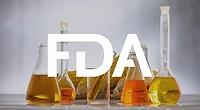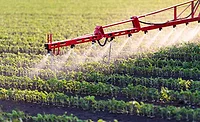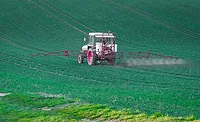FDA Releases Pesticide Residue Report for FY 2020

Credit: JerzyGorecki via Pixabay
The U.S. Food and Drug Administration (FDA) has released its annual Pesticide Residue Monitoring Program Report for Fiscal Year 2020 (FY 2020), which reveals that the levels of pesticide residues measured by FDA in the U.S. food supply are generally in compliance with the U.S. Environmental Protection Agency’s (EPA’s) pesticide tolerances. The report summarizes FDA’s findings from its monitoring of pesticide residues in human and animal foods in FY 2020.
The report is based on data that was collected from October 1, 2019 through September 30, 2020, during which time FDA tested for approximately 750 different pesticides and selected industrial compounds on 2,078 human food samples (316 domestic and 1,762 imported samples) in its regulatory monitoring program. Agency staff collected domestic human food samples from 35 states and imported human food samples from 79 countries. FDA states that the number of pesticides and industrial compounds analyzed in FY 2020 decreased slightly compared to FY 2019, as compounds that are obsolete or are rarely detected were removed from the agency’s scope.
In FY 2020, FDA found that 96.8 percent of domestic and 88.4 percent of imported human foods were compliant with EPA pesticide tolerances. No pesticide residues were found in 40.8 percent of domestic samples and 48.4 percent of imported samples. Among the human food commodity groups, the violation rate in each group was higher for import samples.
FDA also analyzed 102 animal food samples (40 domestic and 62 imported samples) for pesticides. The agency found that 100 percent of domestic and 96.8 percent of import animal food samples were compliant with federal standards. No pesticide residues were found in 30 percent of domestic and 48.4 percent of imported animal food samples.
The agency also notes that, while the results from FY 2020 were similar to those from previous years, the COVID-19 pandemic impacted the FY 2020 report in several ways. For instance, approximately 50 percent fewer human food samples and 70 percent fewer animal food samples were collected in FY 2020 compared with FY 2019. Additionally, more import samples were collected in FY 2020 relative to domestic samples than in previous years, and domestic samples were not collected for the “Domestically Produced Animal Derived Foods” assignment (EU audit assignment).
Looking for quick answers on food safety topics?
Try Ask FSM, our new smart AI search tool.
Ask FSM →








